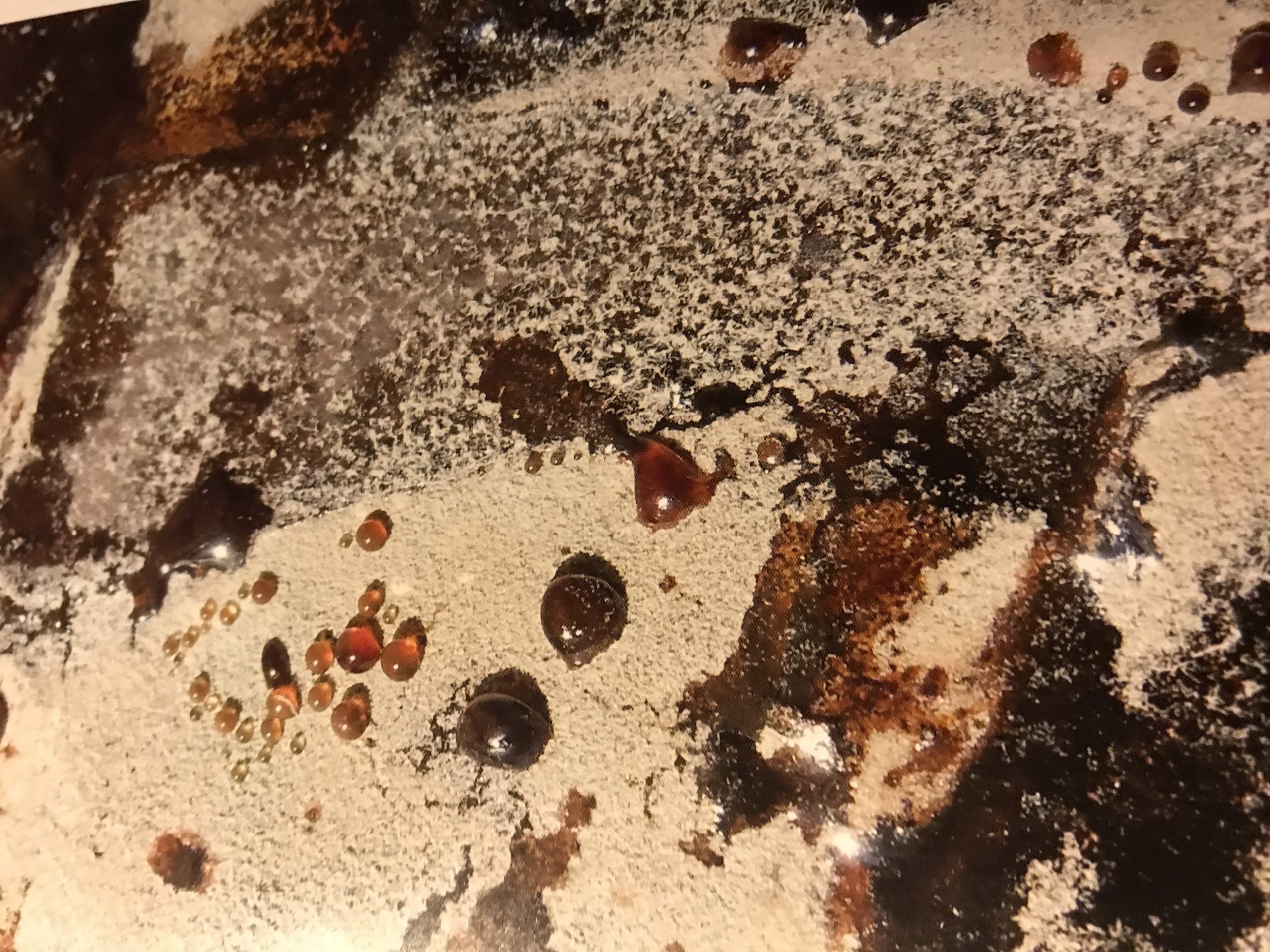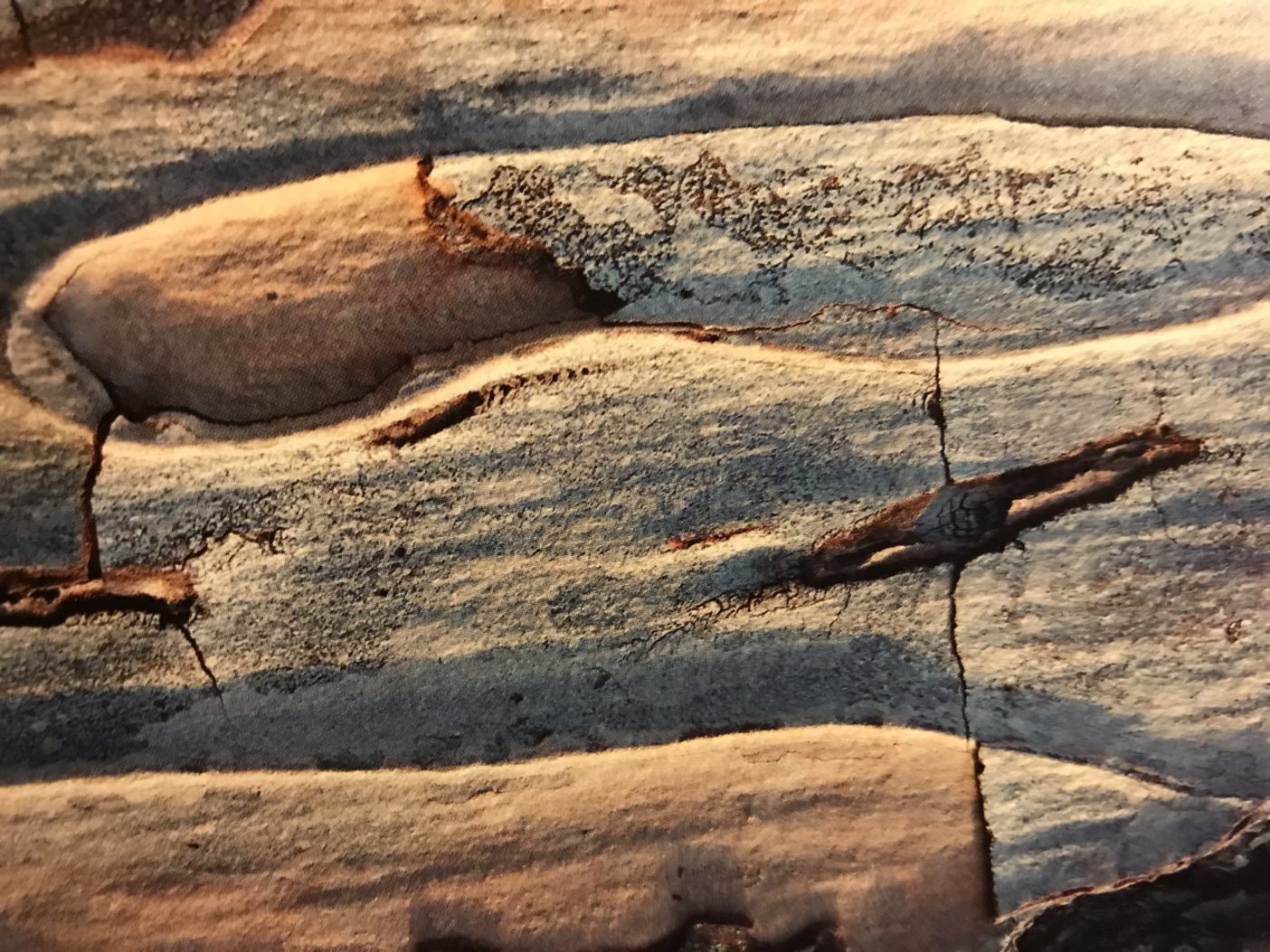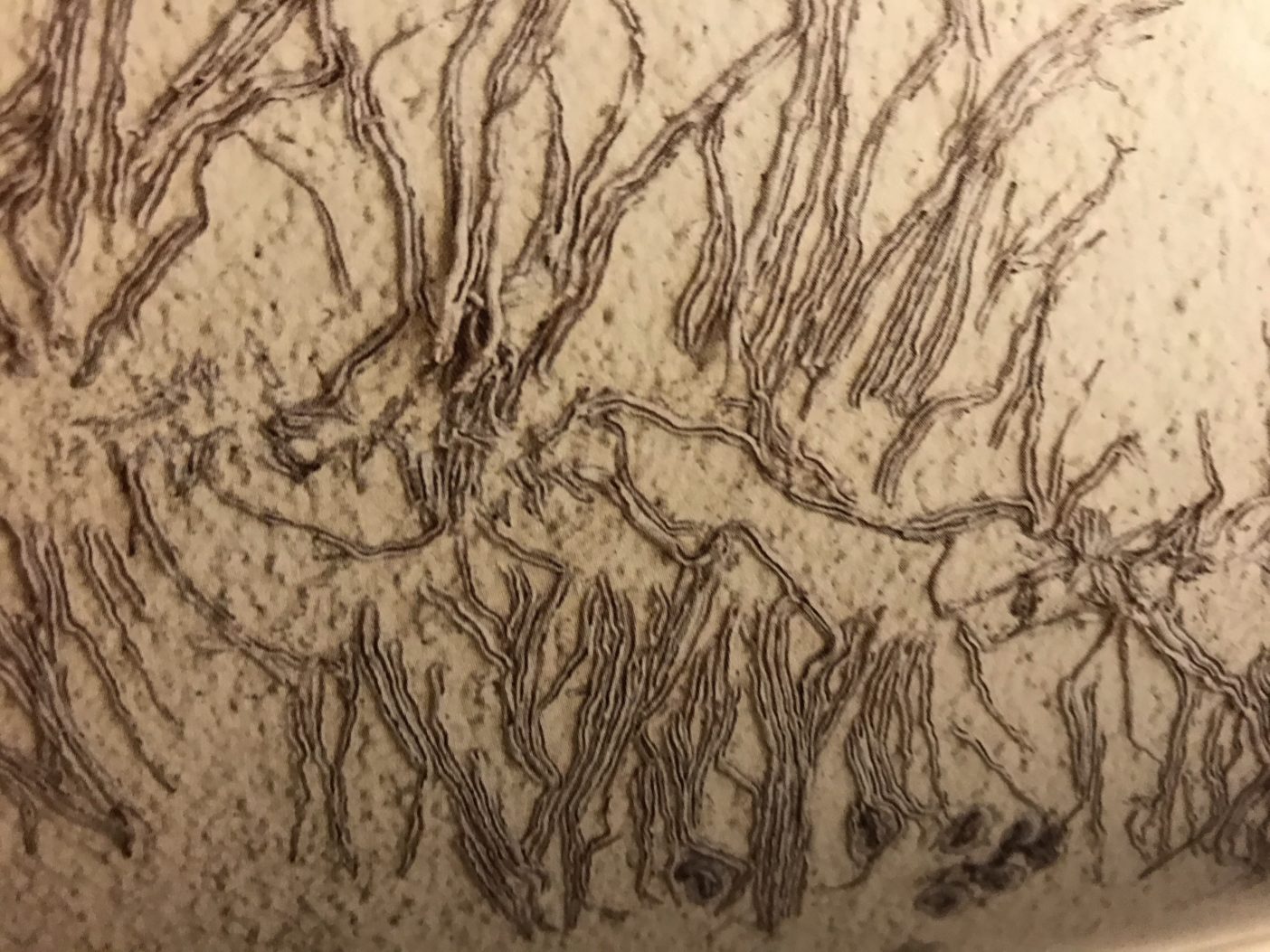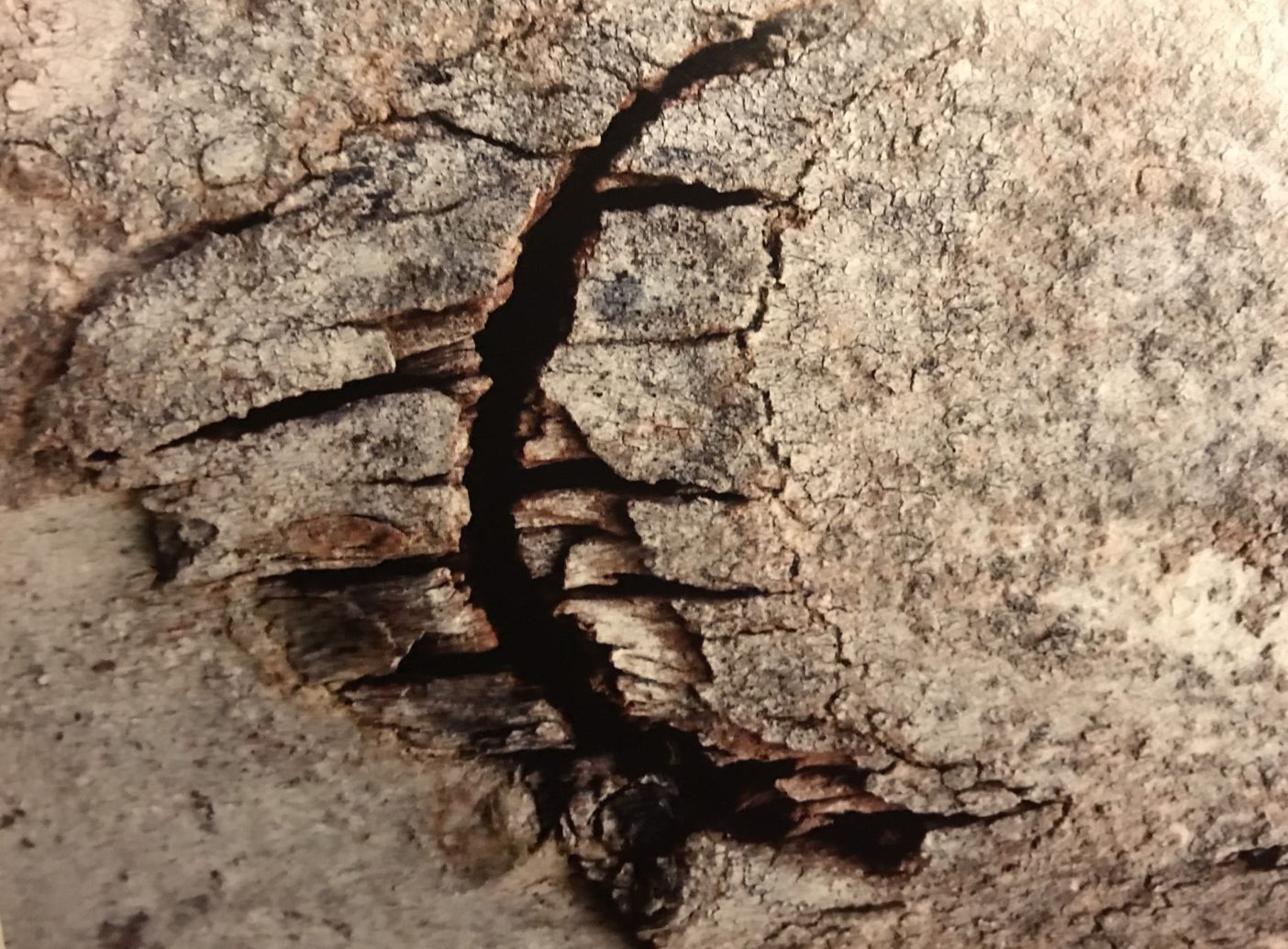Viaggiare per alberi: “La rivoluzione degli eucalipti” di Nina Maroccolo alla GAM di Roma
La rivoluzione degli eucalipti è la mostra che la Galleria d'Arte Moderna di Roma propone fino al 29 agosto. Per viaggiare nell'arte di Nina Maroccolo.

La rivoluzione degli eucalipti è la mostra che la Galleria d'Arte Moderna di Roma propone fino al 29 agosto. Per viaggiare nell'arte di Nina Maroccolo.

(English translation below)
“Mettono radici”, e li pensiamo come presidi dell’immobilità. Non è così: gli alberi viaggiano, approdano a noi da lontano. Il cipresso, icona toscana, è arrivato via Cipro dall’Oriente, asiatici sono tutti gli agrumi tipici della Sicilia, il fico è un migrante dal Caucaso. L’eucalipto ha computo il viaggio più lungo, dall’Australia, e in poco tempo è riuscito a plasmare il paesaggio italiano, in particolare di Roma e dell’Agro. Del lupo di mare ha l’aspetto, con la chioma spettinata, la corteccia trasandata, i rami ombrosi e pigri, le tracce del tempo scalfite su una crescita vigorosa che non conosce timidezze.
Gli eucalipti hanno l’esuberanza di Roma, sempreverdi e testimoni della Storia – “la raccontano, la vivono, la subiscono”, scrive Nina Maroccolo che con gli eucalipti, partendo da un boschetto nei pressi dell’EUR, ha intrecciato una lunga conversazione che è diventata La rivoluzione degli eucalipti – una mostra alla Galleria d’Arte Moderna di Roma aperta fino al 29 agosto un libro di oltre 150 pagine che va ben oltre il profilo del catalogo – ed è un piacere leggere gli splendidi contributi, tra gli altri, del poeta Plinio Perilli e del critico Claudio Crescentini.
Tutti ispirati al cospetto dell’eucalipto, dove Nina Maroccolo non se ne è rimasta con le mani in mano, e da vera artista che è anche grande artigiana, è come alle prese con delle proprie terminazioni nervose – per riprendere la foto di Guido Foà per Rewriters.

Chi viaggi attraverso la mostra della GAM, resta sorpreso dalla moltiplicazione di linguaggi creativi che scaturisce da questo interloquire con l’eucalipto: fotografie, poesie, sculture, design, e altre piste emotive che si aprono con pezzi di corteccia che sono cicatrici, frammenti di rami che diventano corpi, foglie come fogli (è la stessa radice linguistica indo-europea), verticalità del tronco quali sentinella della vita. Il Covid (origine da laboratorio, o forse animale, ma, detto per inciso, mai un virus è stato sprigionato dall’amico albero) non lo ha permesso, ma questa rivoluzione eucaliptica avrebbe dovuto essere anche performance, letture pubbliche.
Dunque un albero totale per un’arte totale, e per viaggi totali: tra mostra e libro si rimbalza tra Australia e Roma, Mediterraneo e isole Svalbard, il Brasile dei Guaranì e dei Tupinikim, l’Africa, la “città interiore”; e si seguono il viaggio planetario della biodiversità (la mostra è inserita nella Giornata della Terra 2021), quello chimico per linfe e cellule della xilema e della floema, il nomadismo-metamorfosi delle policromie offerte dall’eucalipto nel suo divenire.

Il viaggio rivoluzionario degli eucalipti è anche quello di cui abbiamo bisogno, perché siamo fatti della stessa materia, con fibre e resine che conservano e trasmettono i segni impressi dall’uomo e che ora un’artista raccoglie e ritrasforma da par sua. Nelle sale della GAM pare di sentire l’Orlando shakespeariano nella foresta di Arden,
“Questi alberi saranno i miei libri; sulla loro scorza io scriverò pensieri”
pare scorgere i detenuti dei gulag affidare alla corteccia delle betulle i loro ricordi – quasi un atto di rivincita nei confronti dei libri usati come legna da ardere per riscaldarsi nel freddo polare. Pare d’imbattersi in quel collezionista di Nantes (sommo riscrittore, altro rewriter) che ha rivelato un altro modo di viaggiare, raccogliendo oltre un centinaio di legni di diverse provenienze prelevandoli dai pallet; nel genio stravagante di Corrado Arezzo, che ottenne per regio decreto il permesso di inviare dalla sua Sicilia le foglie coriacee di un suo fico a mo’ di cartoline debitamente affrancate (oggi preziose rarità filateliche). E vien da pensare anche a quella installazione che è l’Albero della Bicicletta nel bellunese, che nella sua crescita ha inglobato il ciclo abbandonato da un contadino nel 1952.

Così, Nina Maroccolo ha il merito di porre al centro non l’ego vanitoso dell’artista, ma l’eucalipto, facendone il seme di mille cose, memore che come la scienza, lo stesso viaggiare sia uscito dagli alberi. È la forza di questa mostra e di questo libro/catalogo, delle mille forme in cui si articola, ricordandoci quanto noi tutti dipendiamo dagli alberi, fornitori primi di ossigeno ma capaci anche di condizionare la cultura (ad esempio tanti alfabeti, come quello birmano, sono tutti tondi per evitare nella scrittura di fendere le foglie con segni rettilinei) e ogni forma creativa. Già Leonardo si convinse che attraverso di loro sia possibile leggere gli aspetti del mondo.

Basta sapere osservarli, che è esattamente quello che ci insegna questo eccezionale viaggio degli eucalipti. Altrimenti, male ce ne incorra, perché l’avvertimento di Chateaubriand
“Ovunque siano spariti gli alberi, l’uomo è stato punito per la sua imprevidenza”
si estende dal taglio anche al vivere in mezzo agli alberi ormai a loro estranei, a casa o in viaggio.
ENGLISH VERSION
“They take root”, and we think of them as protectors of immobility. This is not the case: trees do travel, they arrive from afar. The cypress, a Tuscan icon, arrived via Cyprus from the East, all the typical Sicilian citrus fruits are Asian, the fig is a migrant from the Caucasus. The eucalyptus has undertaken the longest journey, from Australia, and in a short time has managed to shape the Italian landscape, especially Rome and its Southern countryside. It has the appearance of the sea wolf, with its disheveled hair, unkempt bark, shady and lazy branches, the traces of time scratched on a vigorous growth that knows no shyness. Eucalyptus trees have the exuberance of Rome, evergreen and witnesses of history – “they tell it, they live it, they suffer it”, writes Nina Maroccolo who with the eucalyptus trees, starting from a grove near the EUR, has intertwined a long conversation that it has become The eucalyptus revolution – an exhibition at the Galleria d’Arte Moderna in Rome open until August 29 and a book of over 150 pages that goes far beyond the profile of a mere catalog, with beautiful contributions by the critic Claudio Crescentini and the poet Plinio Perilli.
All inspired in front of the eucalyptus, Nina Maroccolo did not remain idle, and as a true artist who is also a great artisan, she seems to be struggling with her own nerve endings – to take the splendid photo of Guido Foà for Rewriters.
Whoever travels through the GAM exhibition is surprised by the multiplication of creative languages that springs from this interact with the eucalyptus: photographs, poems, sculptures, designs, and other emotional tracks that open with pieces of bark that are scars, fragments of branches that become bodies, leaves like sheets, verticality of the trunk as sentinel of life. Restrictions due to Covid (its origin may be from a laboratory or animal, but a virus was never released by a tree) did not allow it, but this “eucalyptus revolution” should also have implied performances and public readings.
A “total tree” for “total art”, and “total journeys”: the exhibition and the book take us through Australia and Rome, the Mediterranean and the Svalbard Islands, the Brazil of the Guaranì and Tupinikim, Africa, the “inner city”; and we have the planetary journey of biodiversity (the exhibition is included in “Earth Day 2021”), the chemical one for lymphs and cells of the xylem and phloem, the nomadism-metamorphosis of the polychromies that a eucalyptus offers in its trabsformations.
The revolutionary journey of eucalyptus trees is also what we need, because we are made of the same material, with fibers and resins that preserve and transmit the signs impressed by man and which now an artist collects and transforms from his side. In the halls of the GAM we can hear Shakespearean Orlando in the forest of Arden,
“These trees will be my books; on their rind I will write thoughts”
we can see the prisoners of the gulags, who entrusted their memories to the bark of the birch trees – almost an act of revenge against the books that were used as firewood to warm themselves in the polar cold. Or we come across that very collector from Nantes (a great rewriter) who has revealed another way of traveling by collecting over a hundred woods of different origins by taking them from pallets; or the extravagant genius of Corrado Arezzo, who by royal decree obtained permission to send from his Sicily the leathery leaves of one of his figs as duly stamped postcards (today precious philatelic rarities). And we can imagine that amazing installation that is the Bicycle Tree near Belluno, which in its growth has incorporated a bicycle abandoned by a farmer in 1952.
Thus, Nina Maroccolo has the great merit of placing at the center not the vain ego of the artist, but the eucalyptus; she makes it the seed of a thousand things, mindful that like science. This is the merit of this exhibition and this book / catalog, of the thousands of forms in which it is divided, reminding us how much we all depend on trees, primary suppliers of oxygen, but also capable of influencing culture (for example, many alphabets, such as Burmese, they are all round to avoid splitting the leaves with rectilinear signs in the writing) and any creative form. Leonardo was already convinced that through trees, it is possible to read the aspects of the world.
It is enough to learn how to observe them, which is exactly what this exceptional eucalyptus journey teaches us. Otherwise, it’s bad, since as Chateaubriand warned,
“Wherever the trees have disappeared, man has been punished for his unpredictability”.
And this warn also applies to the incapacity of living among trees as foreigners to them, whether at home or in our travelling.
